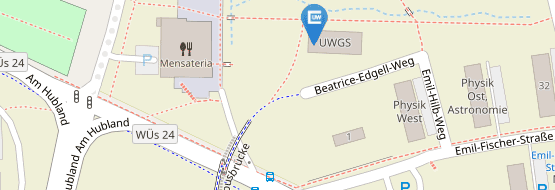Wehner, Maximilian
Dissertation topic:
"Narragonischer Raum. Studies on Sebastian Brant's 'Ship of Fools', selected adaptations and an instructive programme of spatiality."
Contact address at the University of Würzburg:
Faculty of Arts
Institute of German Philology
Chair of German Philology, Older Department
Am Hubland
97074 Würzburg
First supervisor: Prof. Dr Joachim Hamm
Second supervisors:
Class in the Graduate School: "Middle Ages and Early Modern Age"
Doctorate in the Graduate School from WS 2020/2021.
Abstract:
Sebastian Brant's Ship of Fools (Basel 1494) is a satirical, instructive work from the late Middle Ages that criticises human foolishness as the misguided and solely worldly-oriented everyday actions of contemporaries. At the centre of the poem is the warning against a life determined by vanity, the desire for transient goods and self-interest, which leads society into the land of fools, Narragonia . In 112 chapters, Brant therefore urges his readers to free themselves from the folly that clings to every individual and instead to take the arduous but redeeming path of virtue, true knowledge and wisdom(sapientia), which leads to the stad der wißheyt. Brant sees the individual as fundamentally capable of making a corresponding decision of direction and will against the horizon of the European intellectual current of Renaissance humanism, its view of the world and man, which is reflected in many of his literary works, as well as an erudite understanding of poetry.
Of central importance to Brant's teaching are the examples of figures that convey knowledge, which he places alongside the depictions of fools in the individual chapters of the Ship of Fools. Through them, he emphasises the need to work towards the preservation or creation of a stable social order with the help of reason, an insight and power of judgement possible to man, virtuous behaviour and community orientation. An equally central signpost to such an order is also the literary spatiality of the work, which is often linked to the exemplary figures. It is also constructed as an exemplary-referential mediating structure and, as a corresponding deep layer of the fool's poetry in text and image, refers to an orientation-mediating thesaurus of Western knowledge around 1500. In the idea of an individual's journey through life and knowledge, reading the Ship of Fools thus leads the reader out of the foolish darkness of ignorance towards an enlightened and virtuous life. The individual spatial references in the chapters serve as important intermediate stations of knowledge and, in their totality, their referenced instructional and mediated coping potentials of the world, which is obviously turning more and more for the worse outside of literature, form a narragonic space that completely encompasses the Ship of Fools , i.e. a literary space that takes up the entire poem, which has a positive, standardising effect on the lived social reality of its time and attempts to contribute to its improvement. To this end, the poeta doctus Brant draws on a multitude of ideological, motivational, historical and literary traditions and draws on the reflections of the Roman Stoa, the Church Fathers of late antiquity, contemporary Renaissance humanism and the theology of piety on the Upper Rhine. At its core, his literary portrayal aims to construct a new relationship to the world that initiates action and allows people to take the ethically correct path in life by overcoming contemporary perceived individual and social grievances.
The various adaptations of the Ship of Fools, which were created shortly after its first publication, take up Brant's spatial-literary constructions. At the same time, the Narrenschyp (Lübeck 1497), Jakob Locher's Stultifera navis (Basel 1497), Jakob Cammerlander's Kleines Narrenschiff (Strasbourg 1540) and Nikolaus Höniger's Welt Spiegel (Basel 1574) transform the literary spatiality of Brant's fool poetry in order to adapt the literary journey of their fools and their readers to the changing mediation requirements of the respective editions, to a different intended reading public, to changed social contexts of reception and impact, such as those undergoing theological and political upheaval, and thus to the necessarily altered potential for teaching and coping with fools' poetry. However, the literary spatiality never loses its significance with regard to the comprehensive instructional and communicative intentions of the works. After all, the transformations of Brant's narragonic space constantly shed new light on the literary spatiality of his Ship of Fools and thus nuance its humanistic-scholarly and (pious) theological-edifying contexts of use and understanding. Ex post, they thus influence the understanding of their sphere of reference and make it clear that their aims of representation and effect can only be fully revealed with the help of an examination of the history of tradition.






